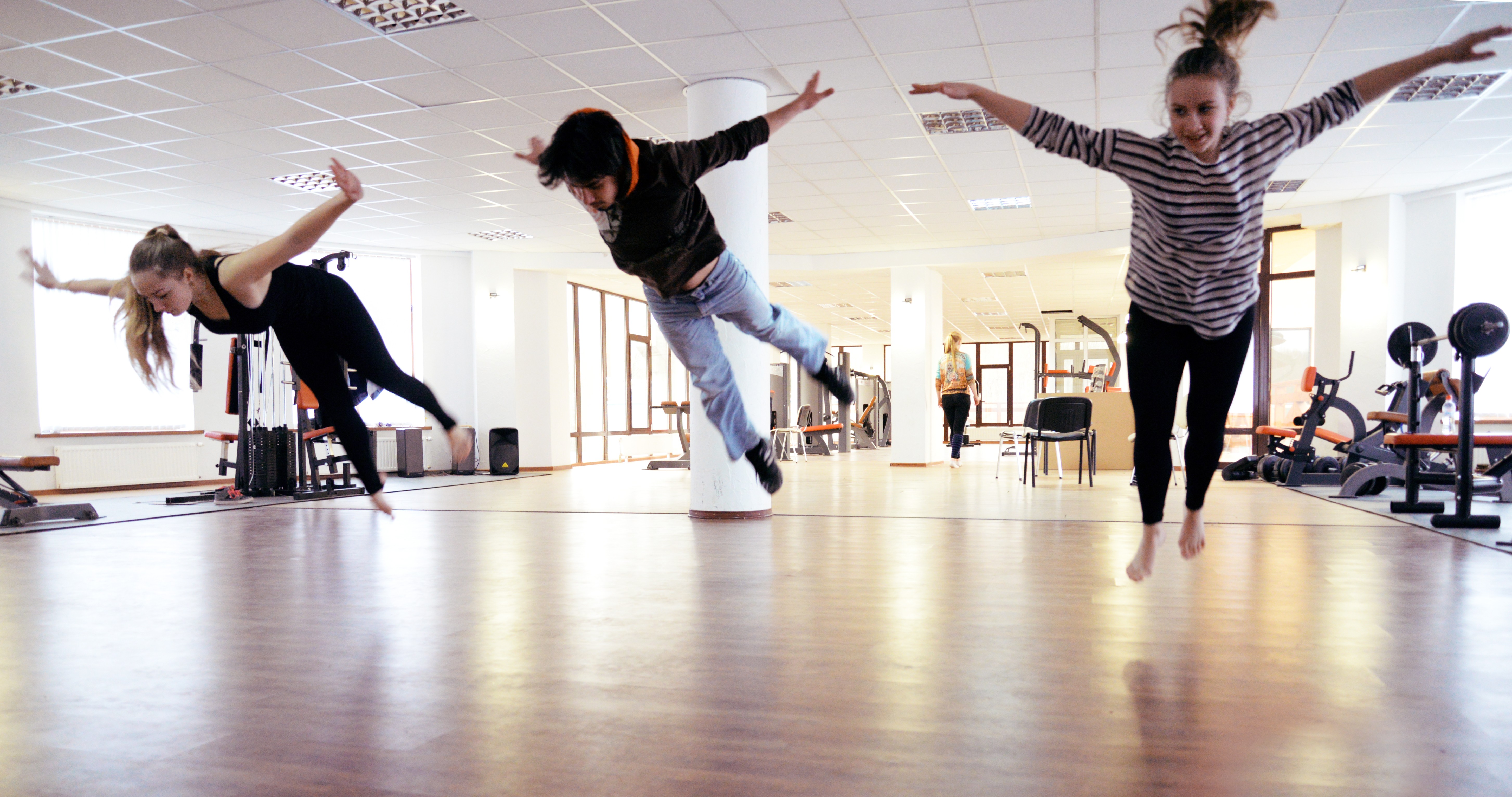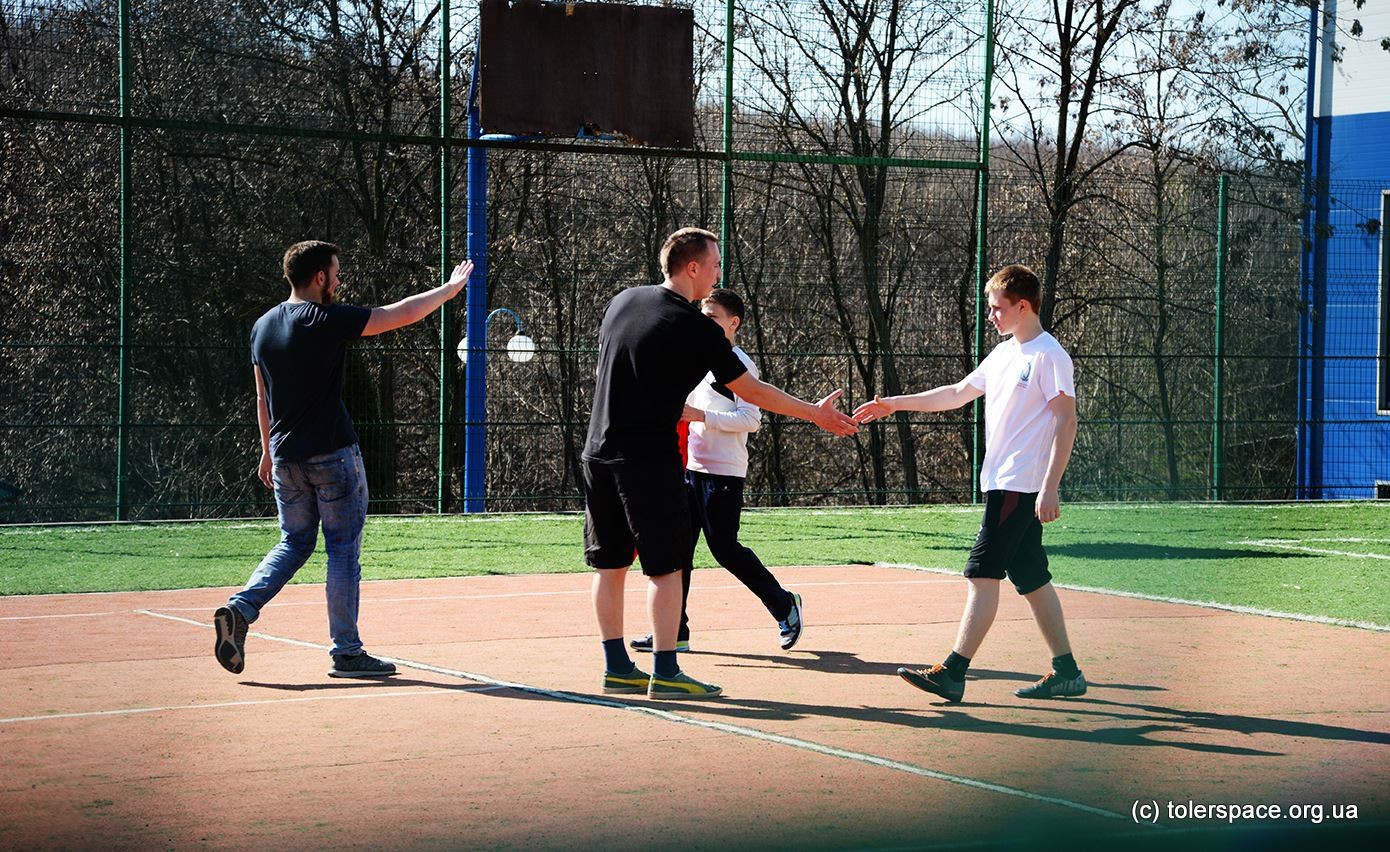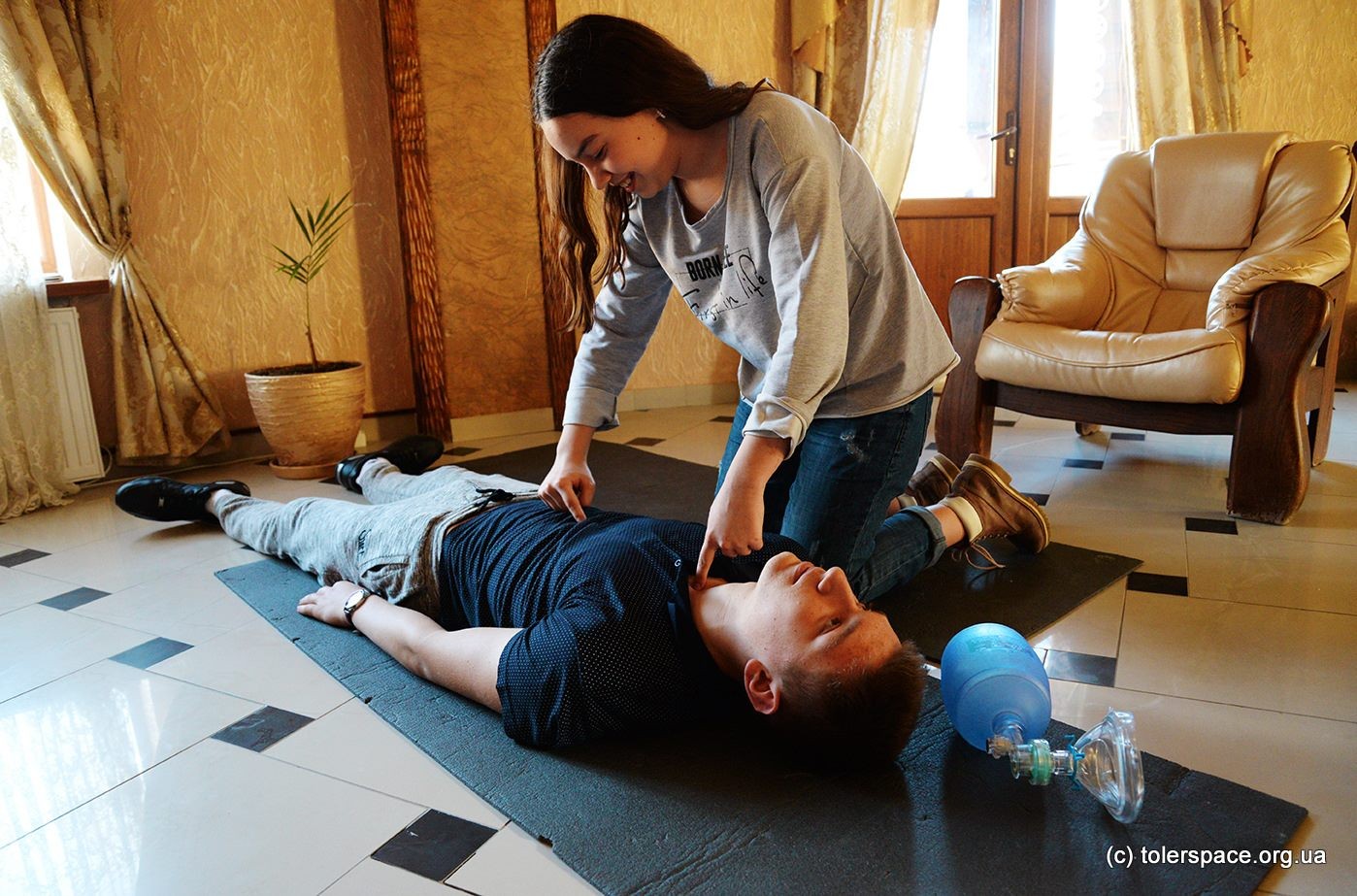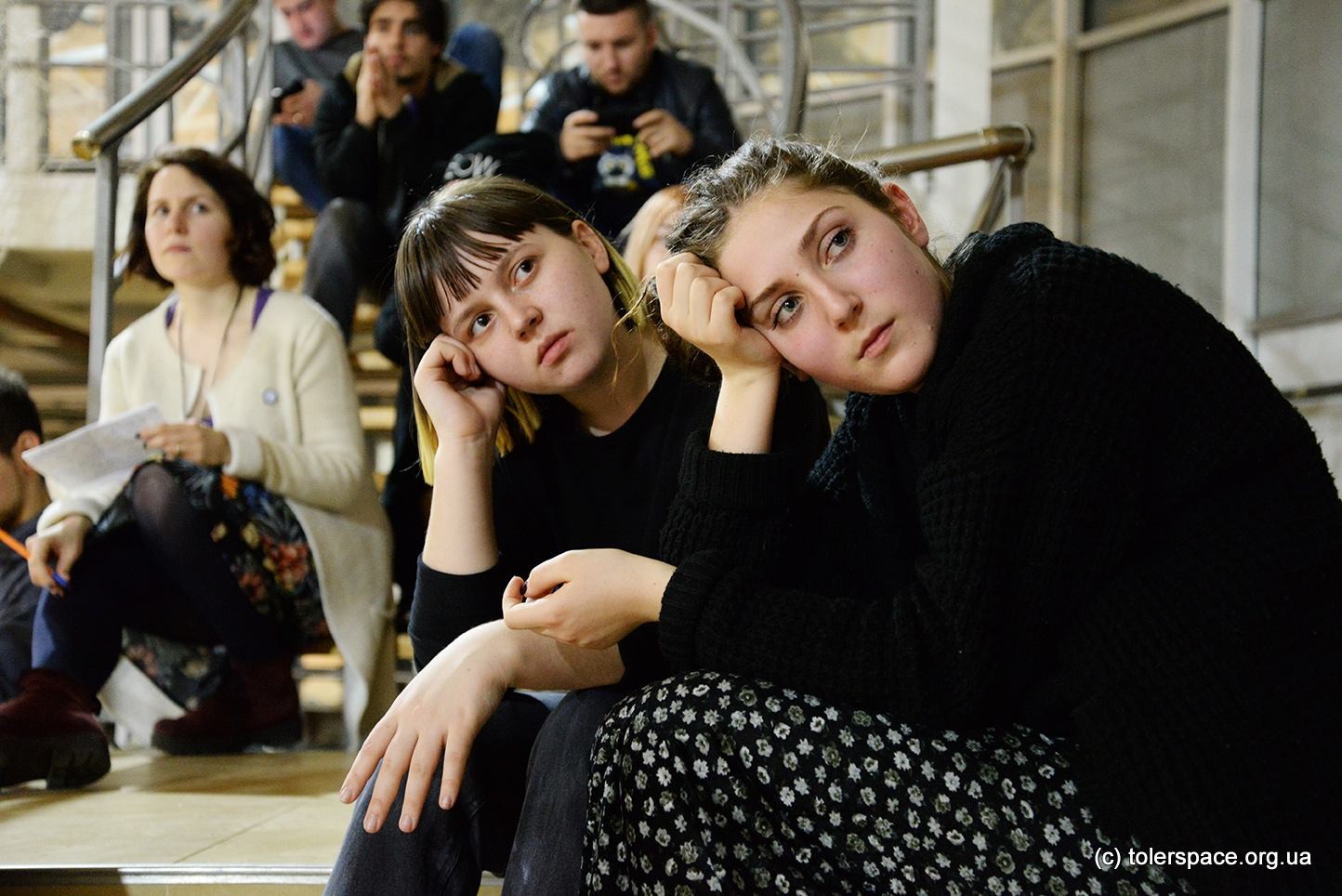CHERNIVTSI, Ukraine – Anna Shapkina, 15, still remembers vividly how scared her family was when the bridge in her home village of Pavlopil has blown up almost two years ago. The blast wave smashed the window of the attic of her home.
Pavlopil, a village of 600 people located just 30 kilometers northeast of the Azov Sea port city of Mariupol, had by the summer of 2015 ended up right on the front line between Ukrainian and Russian-separatist forces.
Soon after the explosion, Shapkina’s family fled to Mariupol, apart from her father, the head of the village council, who returned to the war-torn settlement.
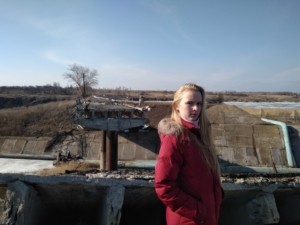
Anna Shapkina from Pavlopil, a village of 600 people located just 30 kilometers northeast of the Azov Sea port city of Mariupol, poses near the ruined bridge in her hometown. (tolerspace.org.ua)
Shapkina recalled her experiences as she sat in the lounge on the first floor of the Sonyachna Dolyna resort in Chernivtsi Oblast in western Ukraine, where she was attending the “Building Bridges not Walls” spring camp. The camp brought together around 60 children of soldiers, children whose families fled from occupied territories, and children who still live in liberated cities near the front lines.
According to UNICEF, the conflict in the eastern Ukraine has “deeply affected” more than half a million children, and forced at least 215,000 of them to abandon their homes.
A photo of Shapkina in front of the ruined bridge in her village was her ticket for a free place at the camp: the organizers allocated 30 free places for children from liberated cities, who had to write an essay about bridges in their lives.
“Building Bridges not Walls” is an informal education project launched by psychologist Anna Lenchovska in 2014 that creates a safe space for children whose lives have been affected by war and their peers from peaceful parts of the country. The organizers hope to help the two groups find a common language.
Psychological rehabilitation
Sonyachna Dolyna resort, where “Building Bridges Not Walls” took place on March 23-29, is located on a low, forested hill surrounded by picturesque meadows just 15 kilometers east of the western Ukrainian city of Chernivtsi. The resort has a huge territory with a lake, outdoor swimming pool, small wooden houses, a large hotel where the children lived, a football field, gym and even a small animal enclosure with wild boars.
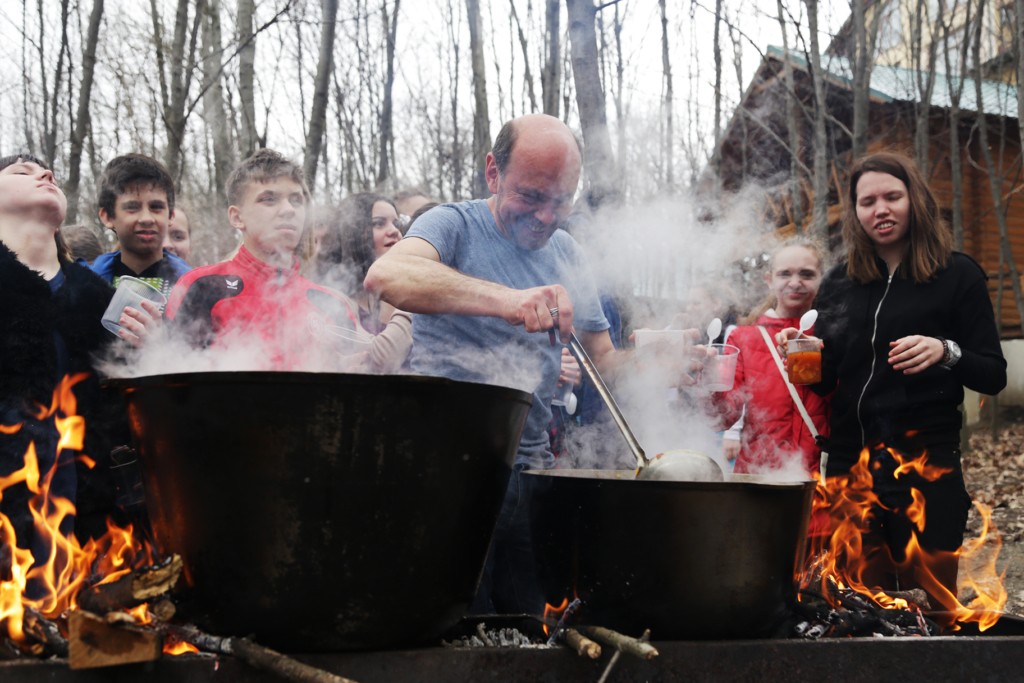
Children prepare Ukrainian traditional dish borshch in a “Building Bridges not Walls” camp. (Dana Verstak) (Iana Korobenko)
Activists from the Kyiv-based non-governmental education organization “Toler Space,” which is run by Lenchovska, raised more than $18,000 from international donors, private companies and campaigns on crowdfunding platforms to hold the camp.
The camp leaders said that many of the children hadn’t expected their accommodation to be so luxurious: most of them have only been to Soviet-style camps, with up to 12 people in one room.
There were other differences as well: camp leaders were more engaged with their child charges than they are in regular summer camps. At “Building Bridges Not Walls” there were various discussion and group therapy sessions, usually in the form of games.
These ranged from simple games, such as ones based on musical chairs, to more complex activities, that required the children to open up to their group and talk about their interests and hopes.
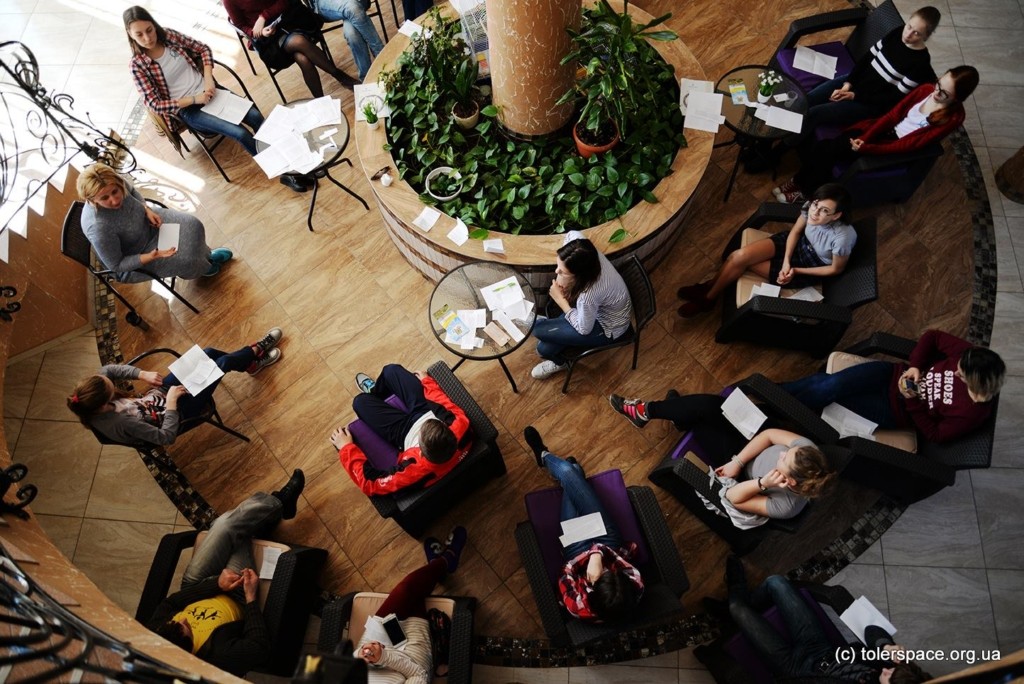
Children attend master classes in the“Building Bridges not Walls” spring camp on March 28. (Dana Verstak) (Picasa)
Besides working in groups divided by age, the children attended various master classes including ones on psychology, critical thinking, the martial art kendo, digital storytelling, painting with hands and legs, and many more.
The most serious psychological exercises were held in the evening. Most of them were built on the methodology used by a Theater of the Oppressed – techniques developed by Brazilian theater practitioner Augusto Boal, which use theater as means of promoting social and political change.
“The aim of the camp is to revive and build up children’s confidence in their inner resources,” Lenchovska say. “Material things, like your house, can be taken from you, but nobody can take away your talents – you can use them anywhere in a global world.”
People, not labels
One of the children who said they benefited from the camp was 14-year-old Olga Sidelnikova. She and her family fled from Donetsk at the outbreak of the war three years ago, and came to Kyiv. They had planned to stay for only two weeks, but as Russia tightened its grip on the occupied territories in the east, the family was forced to remain in the capital.
“I think the camp helped me to better communicate with new people,” Sidelnikova told the Kyiv Post, adding that she had struggled to make new friends in school at first after she moved to Kyiv.
Lenchovska said many children she spoke to in the camp had faced discrimination against displaced people. Sidelnikova was no exception: she said that one girl in her class had started to tease her because she is from Donetsk. Later, however, the conflict was resolved.
Lenchovska said that another of the camp’s main goals was to build interregional human connections that would help children avoid forming stereotypes about each other.
Sidelnikova said that in contrast with her school experience, she had easily made new friends at the camp, because the people here are “creative and open-minded.”
“We want to teach our children to see people, not labels,” Lenchovska added.
Building bridges
The camp organizers said they hoped that this kind of therapy would help the children in future to find non-aggressive solutions to different kind of conflicts, making their lives more peaceful.
“If there were more such kindly, bridge-like relations between people, the war would have ended a long time ago,” reads an essay by 12-year-old Oleksiy Zarnadze from Sivierodonetsk, a city in Luhansk Oblast.

Children dance during the master classes in “Building Bridges not Walls” spring camp in Chernivetska Oblast. (Dana Verstak)
After one of the camp’s evening concerts, he and his older brother Vasyl approached Lenchovska and presented her with a small gift that brought her to tears: a wooden bridge they had made themselves, with two colorful lamps, a green one and a blue one, that shone out in the darkness.
“The green light is for moving forward,” they told her. “And the blue one is for peace.”
